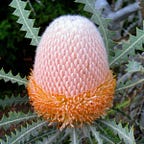Ceylon | Sri Lanka — Pearl of Indian ocean
Sri Lanka, Ceylon, a beautiful island known as the Pearl of the Indian Ocean.
Sri Lanka is an island with a rich history and the scenic beauty of Sri Lanka is proof that Sri Lanka is the most beautiful island in the world.
Sri Lanka is located on the Indian subcontinent south of the Indian Ocean. An island spread over 65 525 km2. It lies between 5°55′ and 9°51′ N and longitudes 79°41′ and 81°53′ E. Maximum length 432 km (Dondra Head to Point Pedro) and the maximum width of 224 km (Colombo to Sankankananda).
Topography
Because of its remarkable elevation, it is divided into three regions: the central hills, the plains, and the coast. The geographical identity of Sri Lanka is further emphasized by the scenic beauty and the different relief systems as well as by the favorable climatic conditions.
The relief and the diversity of climate attract tourists to this country
It is characterized by complex topography such as the plateau, valleys, valleys, and the Mohora. The lowlands of the rest of the island are generally barren except for small hills that rise from the top. This topography is highly affected by wind patterns, seasonal rainfall, temperature, relative humidity, and other climatic conditions, especially during the monsoon season.
Overall, Sri Lanka’s average annual temperature ranges between 28 °C to 32 °C. Temperatures range from as low as 16 °C in the Northeast region to as much as 32 °C in the Northeast, where frost can occur for days at a time. The coastal areas are cooled by a slight wind from the sea.
Regional differences observed in air temperature over Sri Lanka are mainly due to altitude, rather than latitude. The mean monthly temperatures differ slightly depending on the seasonal movement of the sun, with some modified influence caused by rainfall.
The mean annual temperature in Sri Lanka manifests largely homogeneous temperatures in the low lands and rapidly decreasing temperatures in the highlands. In the lowlands, up to an altitude of 100 m to 150 m, the mean annual temperature various between 26.5 °C to 28.5 °C, with an annual temperature of 27.5 °C.
In the highlands, the temperature falls quickly as the altitude increases. The mean annual temperature of Nuwaraeliya, at 1800 m sea level, is 15.9 °C. The coldest month with respect to mean monthly temperature is generally January, and the warmest months are April and August.
Most of the annual rainfall is from the monsoon, convection, cyclone rains. Annual mean rainfall is expected to increase in the drier areas (northeast and southeast). 900 to 900 mm in the wetter (western slopes of the central highlands). The country’s rainfall varies from 500 mm to 5,000 mm.
Weather overview
Unlike many other Asian destinations, Sri Lanka can lay genuine claim to being a year-round holiday destination.
Sri Lanka’s climate is tropical and consists of distinct wet and dry seasons. Generally speaking, the coastal areas of Sri Lanka enjoys temperatures averaging 28°C while the upland areas are cooler and more temperate, with a yearly average around 16–20°C.
Therefore, the best time to visit Sri Lanka depends on where you go.
Reference
Zubair, L.M., Hansen, J.W., Yahiya, Z., Siriwardhana, M., Chandimala, J., Razick, S., Tennakoon, U., Ariyaratne, K., Bandara, I., Abeyratne, T. and Bulathsinhala, H., 2010. Impact assessment and adaptation to climate change of plantations in Sri Lanka.
